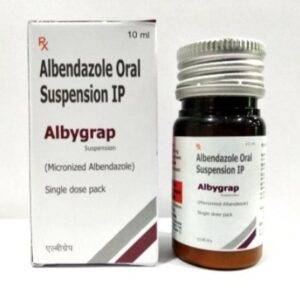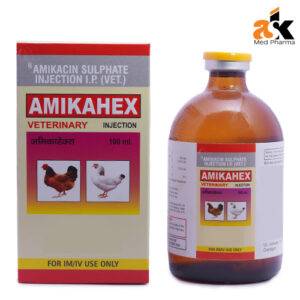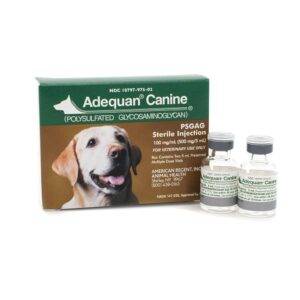Cetacaine spray
Dental procedures can often be associated with discomfort and pain, leading to apprehension and anxiety among patients. This fear can deter individuals from seeking necessary dental care, exacerbating oral health issues. However, advancements in dental anesthetics have significantly improved the patient experience by minimizing pain and discomfort.
Among these advancements, Cetacaine spray has emerged as a popular and effective solution for dental anesthesia. This comprehensive guide aims to explore the benefits, usage, precautions, and more regarding Cetacaine spray, providing valuable insights for both dental professionals and patients.
What is Cetacaine Spray?
Cetacaine spray represents a leap forward in the realm of dental anesthesia. It is a prescription topical anesthetic that numbs specific areas of the mouth and gums quickly and effectively, facilitating a pain-free experience during various dental procedures.
The formulation of it is unique, encompassing a combination of three active ingredients: benzocaine, butamben, and tetracaine. This trio works in tandem to block nerve signals in the body, creating a numbing effect that is both rapid and enduring.
The versatility of it is noteworthy. It is utilized in a plethora of dental procedures, ranging from routine cleanings to more invasive interventions such as root canals. Its ease of application and fast-acting properties make it an indispensable tool in the dentist’s arsenal, enhancing patient comfort and compliance.
Furthermore, Cetacaine’s ability to target specific areas without affecting the entire mouth distinguishes it from other forms of anesthesia, providing a focused approach to pain management.
How does Cetacaine Spray Work?
The mechanism of action of it is fascinating, leveraging the pharmacological properties of its active components to achieve effective anesthesia. Upon application, the spray temporarily blocks the conduction of nerve impulses near the site of application.
This blockade prevents pain signals from reaching the brain, thereby inducing a numbing sensation in the targeted area. The onset of action is remarkably swift, typically taking effect within a minute, and the duration of anesthesia can extend up to two hours, depending on the dosage and procedure.
The pharmacokinetics of Cetacaine spray, characterized by the rapid absorption and subsequent metabolism of its active ingredients, contribute to its efficacy and safety profile. The spray form allows for precise control over the dosage and targeted application, minimizing systemic absorption and reducing the risk of adverse effects. This localized effect underscores the suitability of Cetacaine spray for dental procedures, ensuring that only the area requiring anesthesia is numbed.
Benefits of using Cetacaine Spray for Dental Anesthesia
Opting for it as the anesthetic of choice in dental procedures offers a multitude of benefits. Primarily, the comfort and anxiety reduction it provides to patients are unparalleled. Many individuals experience fear and stress at the prospect of dental work, but the quick and effective pain relief afforded by Cetacaine spray can alleviate these concerns, fostering a more positive dental care experience.
Moreover, the precision of Cetacaine spray application facilitates a more efficient and focused treatment process. Dentists can administer anesthesia directly to the area of interest without affecting the patient’s overall sensory perception, allowing for greater control over the procedure and minimizing discomfort. Additionally, the rapid onset and adequate duration of anesthesia ensure that dental procedures can be performed without unnecessary delays, enhancing the efficiency of dental practices and patient throughput.
Cetacaine Spray vs. Other Dental Anesthesia Methods
When compared to traditional dental anesthesia methods, Cetacaine spray stands out for its non-invasive nature and ease of use. Unlike injectable anesthetics, which can induce anxiety in needle-phobic patients, Cetacaine spray is applied topically, eliminating the need for injections. This aspect significantly improves the patient experience, especially for those with a fear of needles.
Additionally, it offers a more targeted approach to anesthesia than general anesthetics, which can affect the entire body and require more extensive monitoring. The localized action of Cetacaine spray minimizes potential side effects and allows patients to remain fully conscious and responsive during dental procedures, enhancing safety and patient comfort.
Precautions and Safety Guidelines for Using it
While it is generally safe and well-tolerate, certain precautions and safety guidelines must be observe to ensure its appropriate use. It is crucial to adhere to the recommended dosage and application instructions to avoid overdose and minimize the risk of adverse reactions.
Patients with a history of allergic reactions to ester-type local anesthetics should disclose this information to their dentist, as they may be at increased risk of hypersensitivity to Cetacaine spray.
Prior to application, the dentist should review the patient’s medical history, including any current medications, to identify potential contraindications or interactions. It is also important to avoid eating or drinking until the numbing effect has worn off, as this reduces the risk of accidentally biting the tongue or inner cheek.
Step-by-Step Guide on How to Use the product Effectively
For dental professionals seeking to utilize it effectively, a step-by-step guide can ensure optimal results. Initially, the area of application should be dried to enhance the adhesion of the spray.
Holding the canister at a short distance, the dentist should then apply a thin layer of spray to the targeted area, avoiding oversaturation. After application, it is advisable to wait for approximately one minute to allow the anesthetic effect to develop fully.
During the procedure, the dentist should monitor the patient’s response to the anesthesia, adjusting the application if necessary to maintain comfort. After completion, the patient should be inform about the duration of the numbing effect and advise on post-treatment care, including avoiding hot beverages until normal sensation returns.
Common Side Effects of Cetacaine Spray
While it is generally safe, some patients may experience side effects. Commonly report adverse reactions include temporary numbness beyond the target area, mild tingling sensations, or a metallic taste in the mouth. These effects are typically short-lived and resolve without intervention.
In rare instances, patients may exhibit signs of an allergic reaction, such as swelling, itching, or difficulty breathing. If any of these symptoms occur, it is imperative to seek immediate medical attention. The likelihood of severe side effects can be minimize by adhering to the recommended guidelines for use and promptly reporting any adverse reactions.
Cetacaine Spray MSDS (Material Safety Data Sheet) – What You Need to Know
The Material Safety Data Sheet (MSDS) for Cetacaine spray is an essential resource that provides comprehensive information on the product’s chemical properties, potential hazards, safe handling practices, and emergency response measures. Dental professionals must familiarize themselves with the MSDS to ensure the safe use of Cetacaine spray in their practice. The MSDS outlines precautions for storage, disposal, and accidental exposure, contributing to a safe and informed work environment.
Where to Buy Cetacaine Spray and Pricing Options
It is available through dental supply companies and requires a prescription from a licensed dental or medical professional. Pricing may vary depending on the supplier and quantity purchased, with discounts often available for bulk orders. Dental practices should consider their specific needs and budget when selecting a supplier, ensuring access to this valuable anesthetic tool.
Conclusion: Unlocking the Power of the product for Effective Dental Anesthesion
By understanding its mechanism, benefits, and proper usage, dental professionals can enhance the patient experience, reducing anxiety and discomfort associated with dental procedures. As we continue to embrace innovative solutions in dental care, Cetacaine spray remains a pivotal tool in achieving pain-free and efficient dental treatments.
In conclusion, the power of Cetacaine spray in providing effective dental anesthesia cannot be overstate. Its role in improving patient outcomes and streamlining dental procedures underscores its value in modern dentistry. By adhering to the guidelines and precautions outlined in this comprehensive guide, dental professionals can unlock the full potential of Cetacaine spray, ensuring a positive and pain-free experience for their patients.





Reviews
There are no reviews yet.